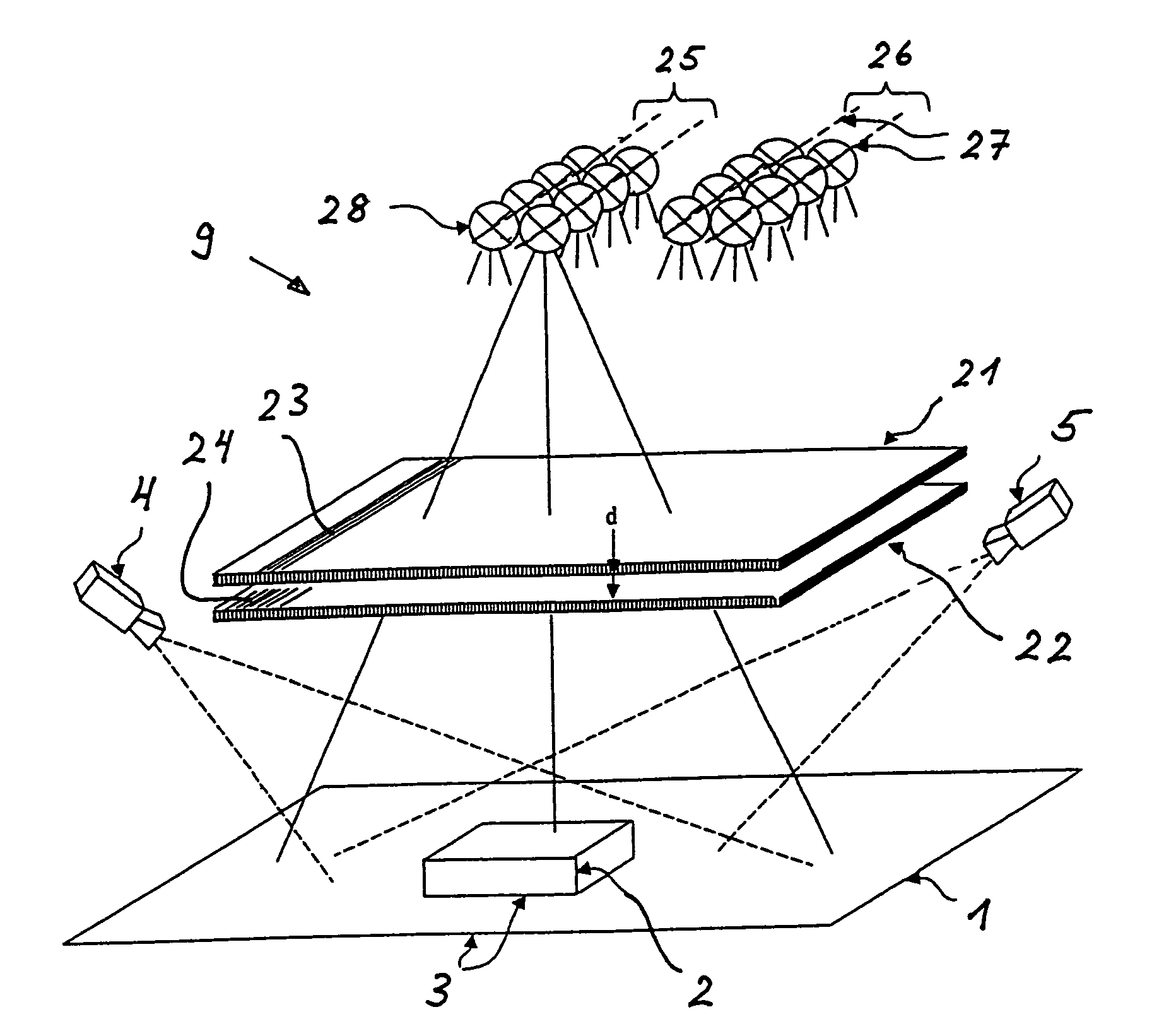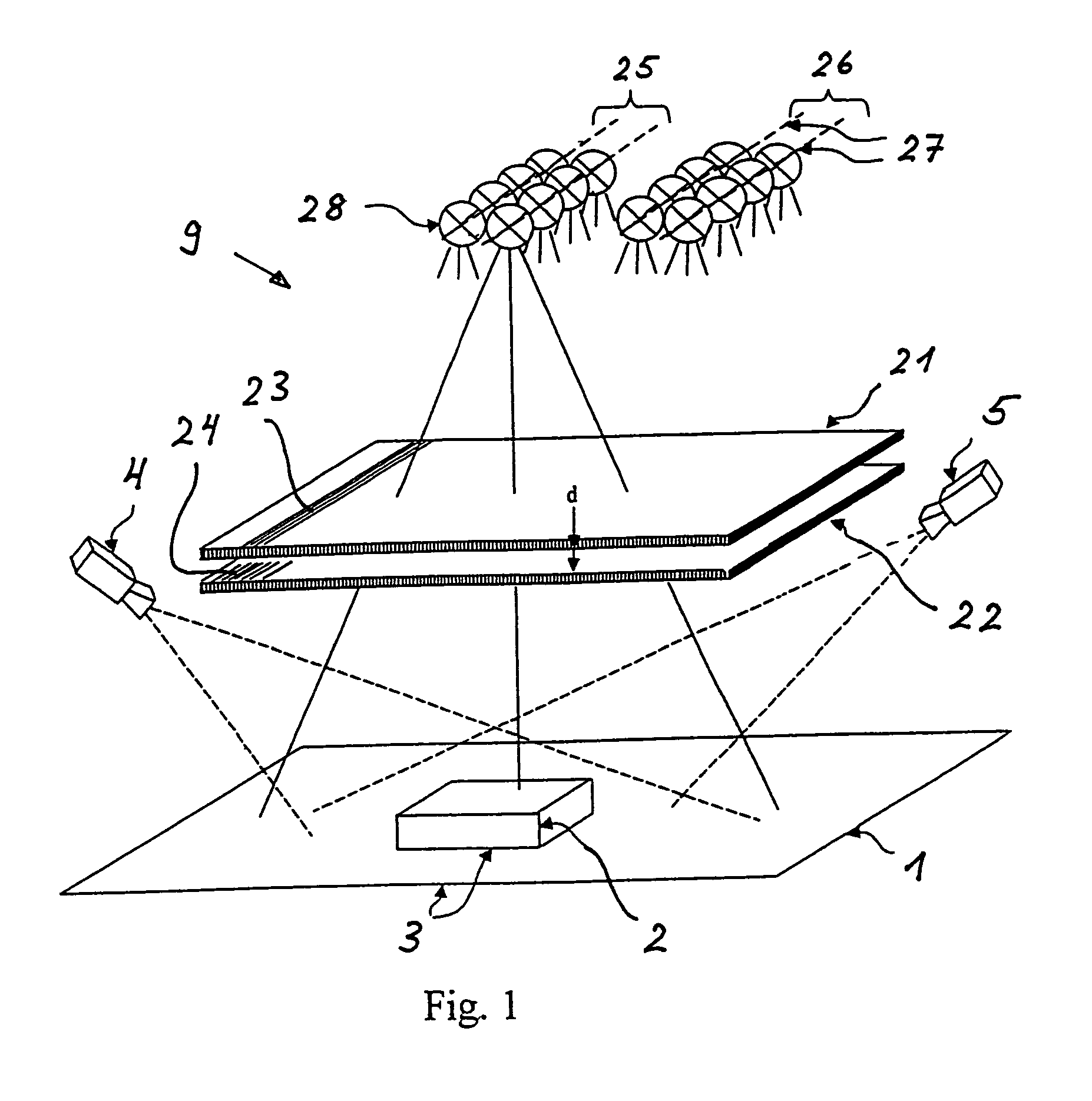Creation of a range image
a range image and image acquisition technology, applied in image data processing, instruments, surveying and navigation, etc., can solve the problems of insufficient allocation, difficulty in establishing the correspondence between pixels, and inability to compare the brightness ratio of images taken
- Summary
- Abstract
- Description
- Claims
- Application Information
AI Technical Summary
Benefits of technology
Problems solved by technology
Method used
Image
Examples
Embodiment Construction
[0142]Several embodiments according to the invention are described below on the basis of FIGS. 1 to 11; generally, those without mechanically moving components are preferred.
[0143]FIG. 1 shows such a preferred embodiment without movement of parts. As explained below in FIG. 8, the random patterns are here realized in moiré technique by superposition of two optical gratings 21, 22, with the grating constant varying in a pseudo random manner with at least one grating. According to the invention, the gratings 21, 22 have a distance d to each other so that with illumination from different directions different moiré patterns result, without a mechanical movement of the gratings 21, 22 being required.
[0144]In the example in FIG. 1, the strip grating structures 23, 24 are roughly arranged transversely to the epipolar lines so that the moiré random patterns also run roughly transversely to the epipolar lines. In the example, the mask of the top grating 21 is uniformly structured; the mask o...
PUM
 Login to view more
Login to view more Abstract
Description
Claims
Application Information
 Login to view more
Login to view more - R&D Engineer
- R&D Manager
- IP Professional
- Industry Leading Data Capabilities
- Powerful AI technology
- Patent DNA Extraction
Browse by: Latest US Patents, China's latest patents, Technical Efficacy Thesaurus, Application Domain, Technology Topic.
© 2024 PatSnap. All rights reserved.Legal|Privacy policy|Modern Slavery Act Transparency Statement|Sitemap



